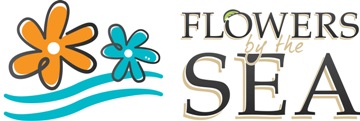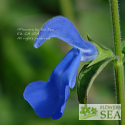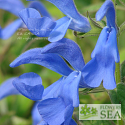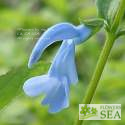(Guanajuato Giant Gentian Sage) At 3 inches long, the flowers of this Gentian Sage are the largest of any we grow. Guanajuato Giant is also unique for its tall, upright growth and heavily textured foliage. This is our own tested seed strain of this rare plant.
Guanajuato is slow and difficult to propagate vegitatively, so we've developed a seed strain of this variety so that more people can enjoy it. There are minor variations in the flowers, but all are large and deep blue - very close to the original clone.
Spikes of deep, true blue flowers that rise up to 48 inches tall make this perennial sage a standout in the garden from summer into fall. This Gentian Sage is reliably perennial in USDA Zones 8 to 11. Its spectacular flowers also make it a fine choice as a summer bedding plant in areas with colder winters.
Guanajuato Giant likes regular watering and rich, well-drained soil. It does fine in full sun or partial shade and can handle moist corners of the yard. Use it as a path edging, border, groundcover or container plant.
German botanist Karl Hartweg discovered the Salvia patens species in 1838. British horticulturist Graham Stuart Thomas later called it "the best plant in cultivation."
Although, true blue is not a part of the color spectrum that hummingbirds favor, they are attracted to Gentian Sages especially when mixed with red-flowered sages.



